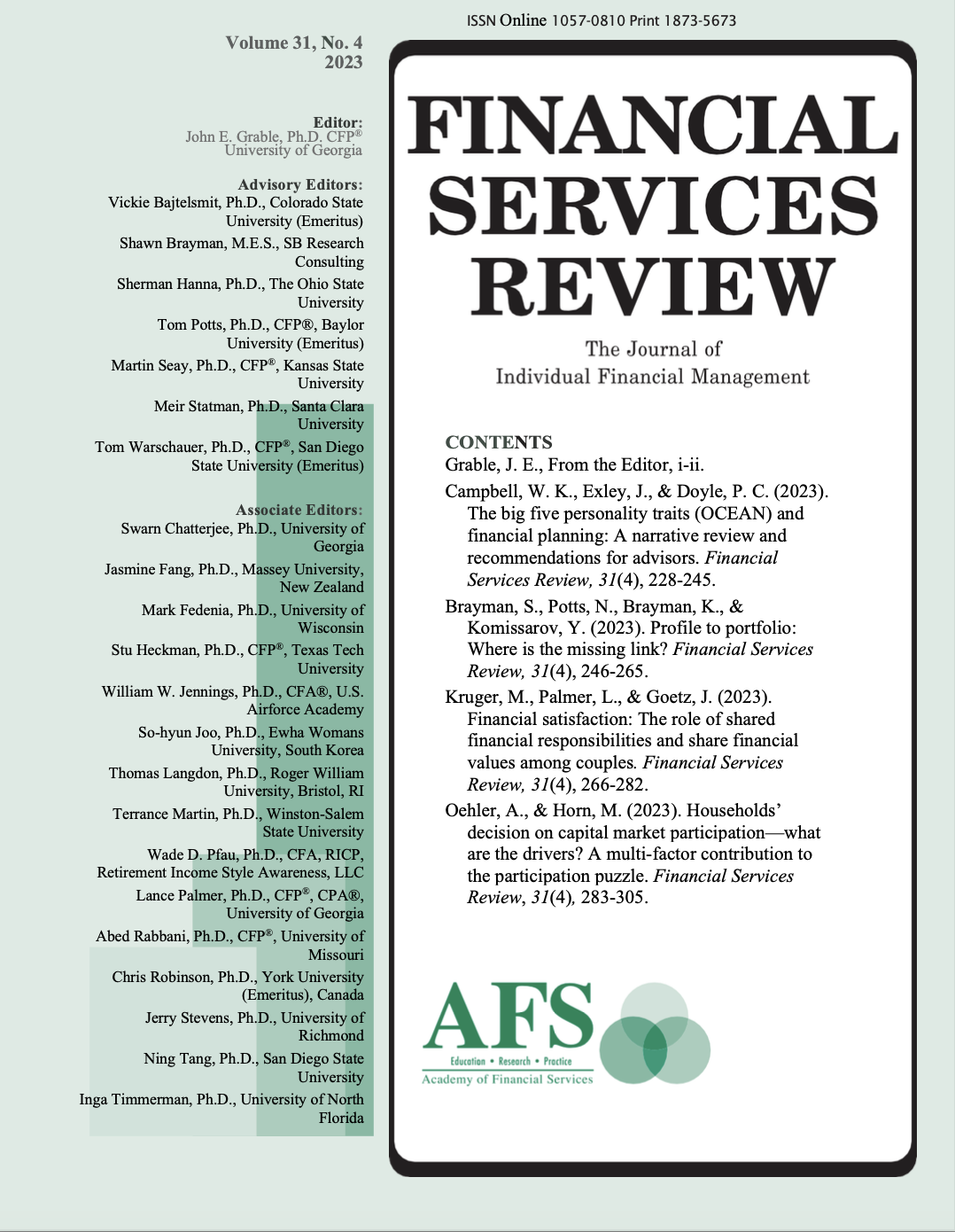Profile to Portfolio
Where is the Missing Link?
DOI:
https://doi.org/10.61190/fsr.v31i4.3177Keywords:
investment risk, portfolio mapping, risk capacity,, risk profilingAbstract
This paper focuses on comparing reproducible methodologies to map an investor risk profile into portfolios, products, and solutions in a suitable manner. This study is premised on the assumption that financial advisors have access to valid measures of an individual’s tolerance to take investment risk or aggregate investor risk profile, and measures of the riskiness of products and portfolios of products. We compared three methodologies from the academic literature or regulators against investment alternatives we constructed. The alternatives were a range of 14 efficient portfolios using long-term indices in the United States, Canada, the United Kingdom, and Australia. Seven were based on an equal distribution of risk (i.e., the standard deviation increased equally between the seven portfolios), and seven portfolios where the percentage return of each portfolio increased by the same amount between each portfolio. The portfolios distributed by risk were discarded in favour of those distributed by return, and these were then mapped to determine the risk level of the investor they were considered suitable for based on the three methodologies. It was determined that (a) behavioural expectation and exposure to equities is a valid heuristic but insufficient to scale to the wide variety of portfolios and products, use of leverage, and other factors in the marketplace; (b) rolling standard deviation measures can lead to significantly understated assessments of risk in some periods; and (c) the VaR calculation is recognized in multiple sources as the preferred methodology to align investor concerns of drop in the value of their portfolio to the actual products, but like standard deviation, it is highly impacted by the period utilized. After altering two methodologies (i.e., MIFiD-II and RiskCAT) based on altered duration of data and scaling, respectively, we found that the four methodologies tested agreed with less than one risk band variance and an average correlation of 0.95 to 0.97.
Downloads
Published
How to Cite
Issue
Section
License
Copyright (c) 2023 Shawn Brayman, Nicki Potts, Kira Brayman, Yegor Komissarov

This work is licensed under a Creative Commons Attribution-NonCommercial 4.0 International License.
Author(s) retain copyright and grant the Journal right of first publication with the work simultaneously licensed under a Creative Commons Attribution-NonCommercial 4.0 International License that allows to share the work with an acknowledgment of the work's authorship and initial publication in this Journal.
This license allows the author to remix, tweak, and build upon the original work non-commercially. The new work(s) must be non-commercial and acknowledge the original work.


